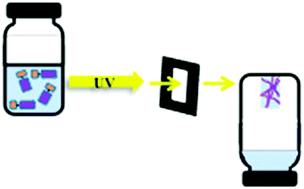UK scientists have developed a new way to make hydrogels using light. The hydrogels could be used in a range of applications from cell culture to biosensors.

The team showed that they could pattern the hydrogel using a photomask. The patterned channels of gels could be used in microfluidics, biosensors and synthetic biomaterials, the team suggest.
Read more about this research in Adams’ ChemComm communication, free to access for a limited period.
Also of interest:
Chem Soc Rev critical review: Supramolecular gels formed from multi-component low molecular weight species










